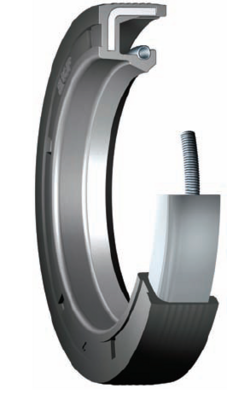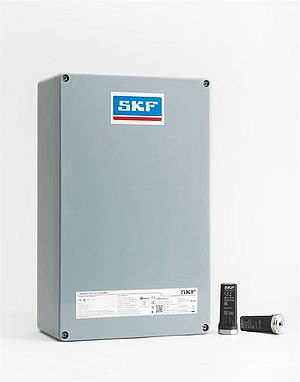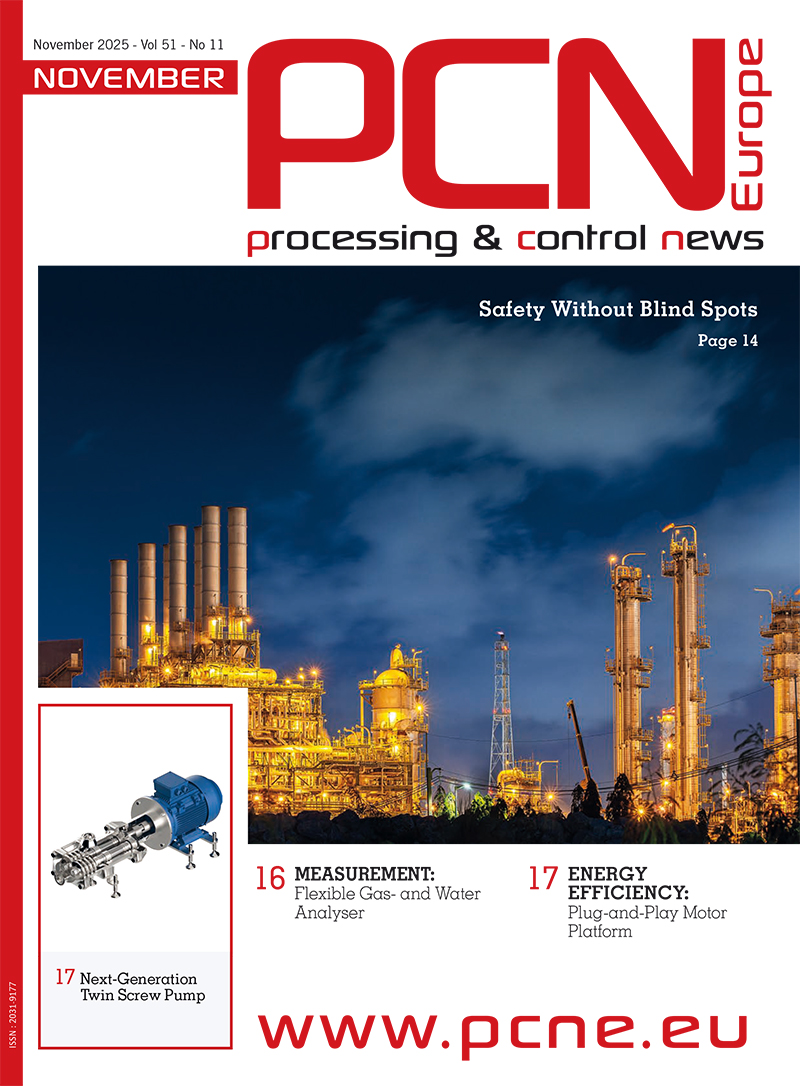Sealing systems have their work cut out for them in pump applications. When a bearing seal in a pump fails, for example, contaminants have an opening to infiltrate both the bearing and the lubricant. Cleanliness of the lubricant will exert a profound effect on bearing service life. And should lubricant be lost from the bearing due to seal failure, dry-running operation ultimately could lead to premature and rapid failure of the bearings. Radial shaft seals have long been the most common types of sealing solutions for bearing arrangements in ANSI class pumps. In general, radial shaft seals will function as barriers to retain lubricant, and exclude contaminants. Labyrinth type seals, also known as bearing isolators, are specified for ANSI Enhanced and API rated process pumps and are gaining acceptance in other service classes. These seals feature a dynamic, non-contacting internal path to exclude fluid and particle contamination while retaining lubrication. They are based on metal or plastic material for chemical inertness and, when installed correctly, offer a very long service life. While the most suitable sealing systems for pumps will be governed by an application’s particular demands and operating conditions, some general guidelines can be offered to assist in making proper choices. In API-design centrifugal pumps (generally heavy-duty process pumps) bearings are usually located at two positions: A single-row deepgroove ball bearing near the impeller accommodates radial loads and floats in the housing (which allows thermal expansion of the shaft) and an angular contact ball bearing set is fixed in the housing in the thrust position at the coupling end. The angular contact set secures the impeller in the proper axial position and handles the thrust load and a portion of the radial load. Bearing locations in ANSI-design pumps (generally light- and medium-duty pumps) are similar to API configurations, except the angular contact ball bearing set is replaced by a double-row bearing (single bearings with two rows of balls in the thrust position). Bearing arrangements for pumps generally serve to enable smooth, efficient shaft rotation. Sealing systems will contribute to a bearing’s reliable operation and ability to reach full service life. Contacting radial shaft seal solutions typically will incorporate: A shell (sheet steel or elastomer covered) to which the lip material is bonded and provides the requisite interference fit of the seal in the housing bore; a sealing lip of elastomer or other material, which provides dynamic and static sealing against the shaft. In pump power frames, the sealing lip should always point toward the material to be retained. Most rubber sealing lips are made from a formulation of nitrile rubber. Some specially produced material variations have been introduced for use with synthetic fluids or chemically aggressive lubricants. Users can select from a wide variety of seal designs (and materials) to accomplish specific functions. Particularly in pump bearing applications, seals will be exposed to low and relatively constant pressure differentials so general purpose seals are sufficient. However some types of pumps utilize radial seals as the main pressure retention seal (in which the seal cavity is pressurized). Seal manufacturers offer particular lip profiles for this role that resist deformation under pressure loading and moderate surface speeds. In cases where higher shaft speeds are exhibited, the permissible pressure differential across the seal becomes smaller. As pressure is applied to the seal, more of the lip surface is forced against the shaft, which produces greater friction (as does increased shaft speed). Since too much friction will result in faster wear and shorter seal and shaft life, the two parameters (pressure and surface speed or PV factor) must be balanced against each other. Some radial designs, principally using PTFE lip material, can accept a PV in excess of 250,000 depending on the service life requirements. Specification of seals for pumps begins with selecting the correct general design for the application. For example, a spring-loaded radial sealing lip will usually be required to retain a head of oil or low viscosity fluid. Correct sizing for the hardware should follow (inch and metric dimensions and tolerances should not be mixed). For maximized service life and optimized seal performance, users then should evaluate all relevant operating conditions, which will further guide in seal selection. Among the key operating parameters when considering sealing systems in pumps is the surface speed. Each type of radial shaft seals has surface speed limits. Generally speaking, surface speed capability and parameters such as seal torque, power consumption, under-lip temperature, and the effect of dynamic run-out will take inverse proportions. All these speed-related influences can ultimately contribute to shortened seal life. The majority of standard small bore radial seals, under 8 in. shaft diameter, are rated up to 3600fpm (feet per minute) or 18.3m/s (meters per second), while the large diameter seals, over 8 in. shaft diameter, are rated to approximately 5000fpm or 25.4m/s. Plastic bearing isolators can usually accept up to 5000fpm (25 m/s) while metallic versions can be capable of 10,000fpm (50.80m/s). To exceed these speed recommendations typically calls for special design considerations. Design variations that can help combat the negative effects of higher shaft speeds include reducing the radial load of the seal lip; changing to a sealing material that can handle higher temperatures; changing the lubricant type or viscosity; optimizing the shaft sealing surface; and turning to a non-contacting labyrinth seal desig
- Temperature. Each seal material has an optimum range. Beyond that, thermal stress will harden the compound (and heat aging is a more common cause of failure than wear for nitrile rubber). This can often be observed as subjective hardness or a series of radial cracks. Upgrading the seal material (such as to a fluoropolymer or PTFE) can extend a seal’s thermal limit to meet many pump system requirements.
- Pressure. Pressure loading from system conditions or a fault (such as a plugged vent) will mechanically load and distort a seal’s lip profile, resulting in rapid wear and failure. Standard radial seals are designed for only about 7 psi (pounds per square inch). Special profiles and materials can be specified to compensate for pressure.
- Surface finish preparation. For optimum radial lip seal performance and service life, a surface finish of 0.20-0.43μm Ra is recommended with machine lead of less than 0 +/- 0.05°. Contact surfaces for labyrinth seals are less critical and finishes suitable for static o-rings are satisfactory.
Rubber radial seals provide economical and versatile protection for bearings in pumps. Their contact with the shaft can deliver both positive fluid retention and hermetic sealing of the housing. But it should be understood that optimizing a sealing system is a balancing act. Careful definition of the application requirements, evaluating all conditions, and adopting a holistic approach to seal specification can contribute significantly to seal performance and service. Partnering at the outset with an experienced manufacturer of bearings and seals can help chart the most appropriate course for matching seal with pump application.























